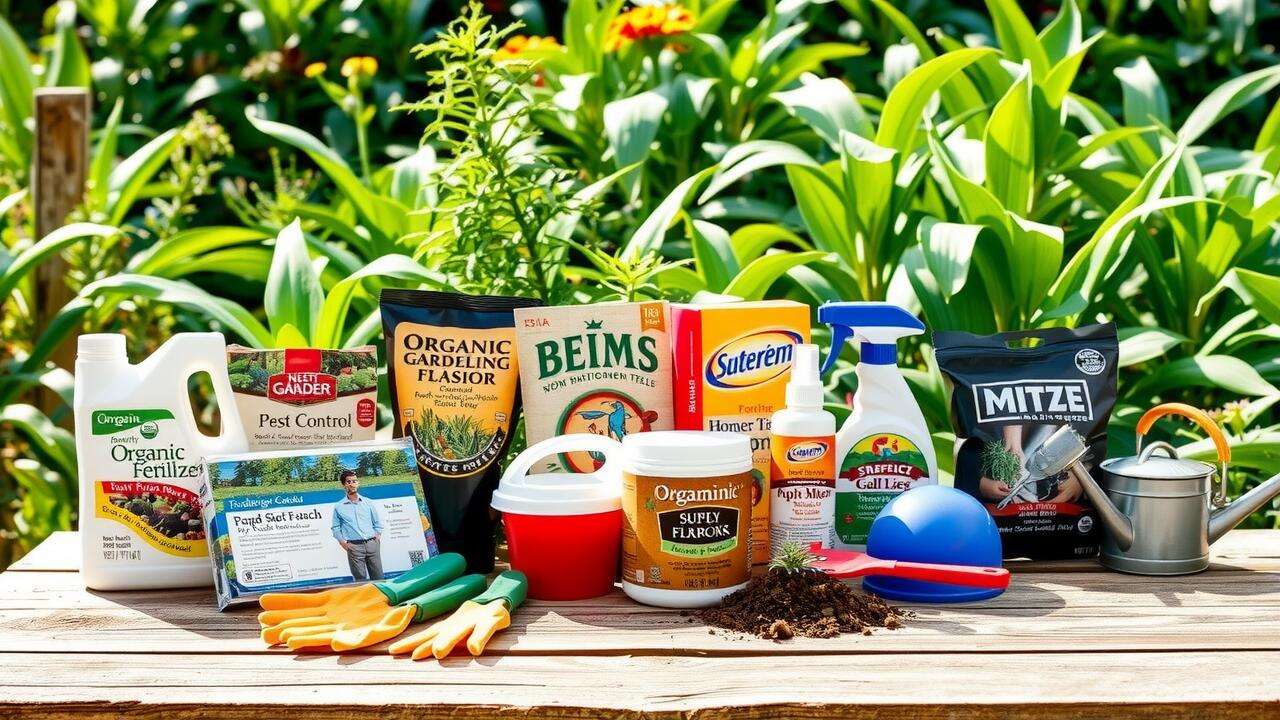Strategies for Reducing Exposure
While staying informed about pesticide exposure is important, practical strategies can help minimize risk. One effective approach is opting for washing fruits and vegetables thoroughly under running water. This method can help remove some surface residues from the produce. Additionally, removing the outer layers of fruits and vegetables, when appropriate, can further reduce exposure to harmful chemicals.
Selecting seasonal and local produce can also contribute to minimizing pesticide consumption. Local farmers often use fewer chemicals due to shorter supply chains, which can allow for fresher options. Supporting community gardens and farmers’ markets fosters a connection with the source of food, promoting transparency regarding farming practices. Adopting these habits can lead to more informed decisions and healthier choices overall.
Continue reading this article for more information.
Washing and Peeling Techniques
Effective washing and peeling can significantly reduce pesticide residues on fruits and vegetables. Rinsing produce under running water helps remove dirt, bacteria, and some chemicals. It is best to use a clean brush for items with tougher skins, such as potatoes or cucumbers. Some studies have shown that soaking produce in a mixture of water and vinegar can further enhance the removal of pesticides, but it is essential to rinse thoroughly afterward to eliminate any residual taste.
Peeling can also be an effective method to reduce exposure to pesticides, especially for fruits and vegetables that are prone to having higher residues. This process is particularly useful for items like apples and carrots. However, it’s important to note that peeling can also remove some of the nutrients found in the skin, potentially diminishing the health benefits of these foods. Balancing these techniques with an understanding of produce choices is crucial for maintaining both nutrition and safety.
Organic vs. Conventional Produce
Choosing organic produce often stems from concerns regarding pesticide exposure and environmental sustainability. Organic farming practices prioritize the use of natural substances and processes, reducing chemical runoff and promoting biodiversity. This approach can lead to healthier soil and ecosystems, which benefits not only the produce itself but also the surrounding wildlife.
Conventional produce, while typically more affordable and widely available, may contain residues from synthetic pesticides. These products often involve different farming methods that can lead to higher yields but may compromise soil health and water quality over time. Consumers frequently weigh the trade-offs between the perceived safety of organic options and the practicality of conventional choices, making informed decisions based on personal values and budgets.
Benefits of Choosing Organic
Opting for organic produce can significantly reduce exposure to harmful pesticides and chemicals. Many consumers are drawn to organic options not just for health benefits but also for their environmental impact. Organic farming practices often promote biodiversity and soil health. This approach to agriculture can lead to more sustainable ecosystems, contributing positively to local environments.
Additionally, organic fruits and vegetables may offer higher nutritional value in some cases. Studies have suggested that organic produce can contain more antioxidants and essential nutrients compared to its conventionally grown counterparts. The absence of synthetic fertilizers and pesticides may enhance the natural flavors and quality of food, leading to not just a healthier diet but also a more enjoyable culinary experience.
The Role of Consumer Awareness
Awareness among consumers plays a crucial role in making informed decisions regarding food choices. Understanding the potential risk associated with pesticide residues can drive individuals to seek safer alternatives when purchasing fruits and vegetables. Knowledge about the “Dirty Dozen” provides transparent information, empowering shoppers to prioritize their health and well-being while navigating grocery store aisles.
Educating oneself on the differences between organic and conventional produce can further enhance consumer initiatives. Recognizing certifications and labeling can help in selecting products that align with personal values regarding sustainability and health. Increased dialogue around agricultural practices also fosters a community of mindful consumers who advocate for safer food practices and support local farmers.
Educating on Produce Choices
Understanding the various types of produce and their potential contaminants is essential for making informed choices. Awareness of the “Dirty Dozen” list can guide consumers when prioritizing which fruits and vegetables to buy organic. This list highlights produce that typically contains higher pesticide residues, prompting consumers to opt for organic alternatives when possible. By staying informed, individuals can minimize their exposure to harmful chemicals and promote better health.
Educational initiatives play a crucial role in raising awareness about the importance of produce selection. Workshops, online resources, and community programs can provide valuable information about safe washing methods and the benefits of choosing organic options. Engaging consumers in discussions about sustainable practices encourages more thoughtful purchasing decisions. A well-informed public ultimately drives demand for cleaner, safer produce in the market.
FAQS
What is the “Dirty Dozen”?
The “Dirty Dozen” refers to a list published by the Environmental Working Group (EWG) that identifies fruits and vegetables with the highest levels of pesticide residues.
How often is the Dirty Dozen list updated?
The Dirty Dozen list is typically updated annually by the Environmental Working Group, based on new data from the U.S. Department of Agriculture and the Food and Drug Administration.
What are some examples of fruits and vegetables on the Dirty Dozen list?
Common items on the Dirty Dozen list often include strawberries, spinach, kale, and apples, among others. The specific items can vary each year based on pesticide residue testing.
Why should consumers be concerned about pesticide residues?
Pesticide residues can pose potential health risks, particularly for vulnerable populations like children, pregnant women, and individuals with compromised immune systems. Reducing exposure can be beneficial for overall health.
What are effective strategies for reducing exposure to pesticides?
Effective strategies include washing and peeling fruits and vegetables, opting for organic produce when feasible, and staying informed about the latest information on pesticide levels in food.
